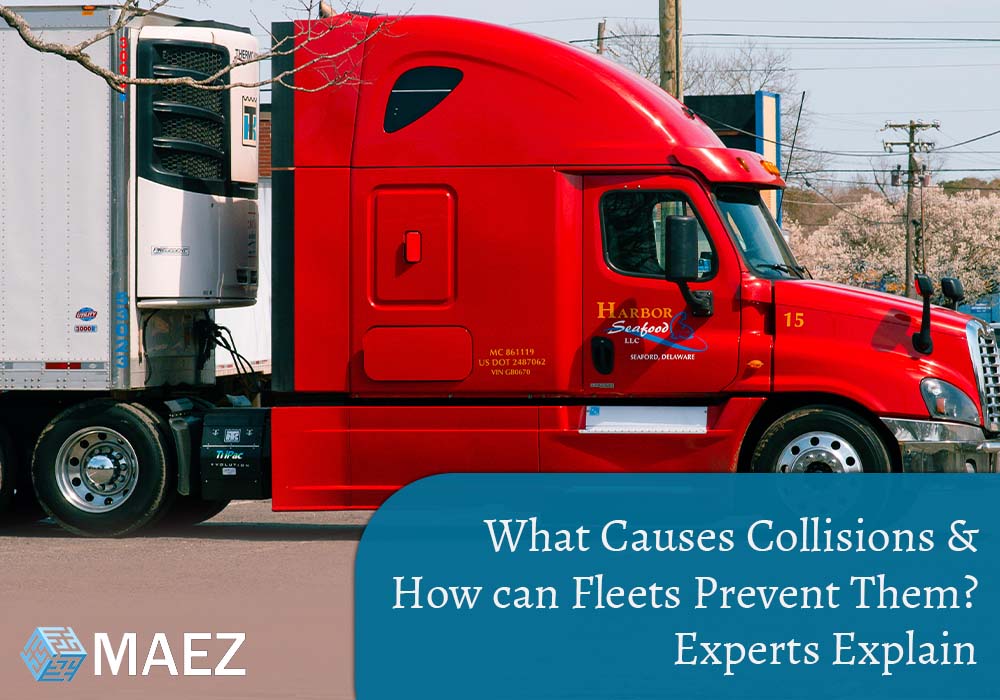What Causes Collisions & How can Fleets Prevent Them? Experts Explain

According to the Heavy Vehicle National Laws (National Safety Council), a preventable accident is defined as “an occurrence involving an employer-owned or leased vehicle that results in an accident in which the driver in question fails to take all reasonable precautions to avoid it.”
The most important takeaway for a fleet expert to examine is the driver’s failure to avoid the collision. If a motorist cannot react promptly to avoid a collision, they are most likely to blame for the collision.
MAEZ – Your Chain of Responsibility Partner!
Fleets can use best safety practices and examine their present safety policy’s efficiency to avoid this from happening.
However, determining what defines an avoidable accident can be a difficult task. Knowing how to recognize preventable accidents and appropriately address problems could go a long way toward preventing them entirely.
Fleet Financials spoke with various fleet safety specialists to learn more about the best strategies for analyzing and preventing preventable incidents.
How Can Fleet Prevent Collisions?
Here’s how to prevent these horrible accidents.
Proper Fleet Management
This information allows you to assign risk to operators based on vehicle type, availability, and other operational criteria that fleet management control.
- Risk profiles for vehicles include class, amenities, technology, and correlating driver risk to vehicle risk.
- Staffing and route planning/optimization are two aspects of operations planning.
- Distractions at work and operational management.
Attentive Training & Policy
Establishing a solid safety policy is the No. 1 principle emphasized across the board to reduce needless accidents. According to Dan Shiv, VP risks management solutions, client success, LeasePlan, “a crucial feature of any safety policy is the practice of training and instilling drivers on defensive driving.”
Additional critical factors that really should be put forth in a fleet security policy to reduce unnecessary incidents, according to Jerry Veres, safety program coordinator, Fleet Response, include:
- How often are accidents permitted each year that could have been avoided?
- Policy on drug testing (including pre-employment, post-accident, random)
- How many are speeding offenses (personal and commercial cars) allowed per year?
- Forms of moving infractions that preclude a person from working for a fleet or driving for a motor carrier
- When and how should all accidents be reported?
- At the very least, each driver's MVR should be reviewed once a year.
Drivers who are tired or exhausted are much less capable of reacting rapidly to changes in the driving environment and are less able to spot items that could be dangerous. A tired or sleepy motorist, for instance, will likely take much longer to detect an approaching junction or railway crossings. Another danger is that an exhausted motorist will take naps behind the wheel.
How to Fix On-Road Risks? Learn here.
Fatigue Management
Drivers can take several steps to lower their chances of being involved in a fatigue-related accident. These include the following:
- Pausing driving for a short nap if they see signs of exhaustion or sleepiness.
- Not driving at times of day when they usually are sleeping.
- Obtaining enough sleep before driving.
Telematics
Another critical aspect of the fleet safety policy is telematics data to check that the drivers are following the company’s policies. Utilizing telematics information can assist fleets in monitoring inattentive driving, racing, risky maneuvers, harsh braking, and quick acceleration, as per Bob Martines, president, and Chief executive officer of Corporate Claims Management.
“As the day ends, the only way to know if these programs are genuinely helpful is to look at the telematics habits for the unique driver who was trained,” Sloan said. “Simply avoiding an accident may not indicate that the education was helpful; it can simply mean that the motorist was lucky to avoid accidents if he or she did not change their bad driving behaviors.”